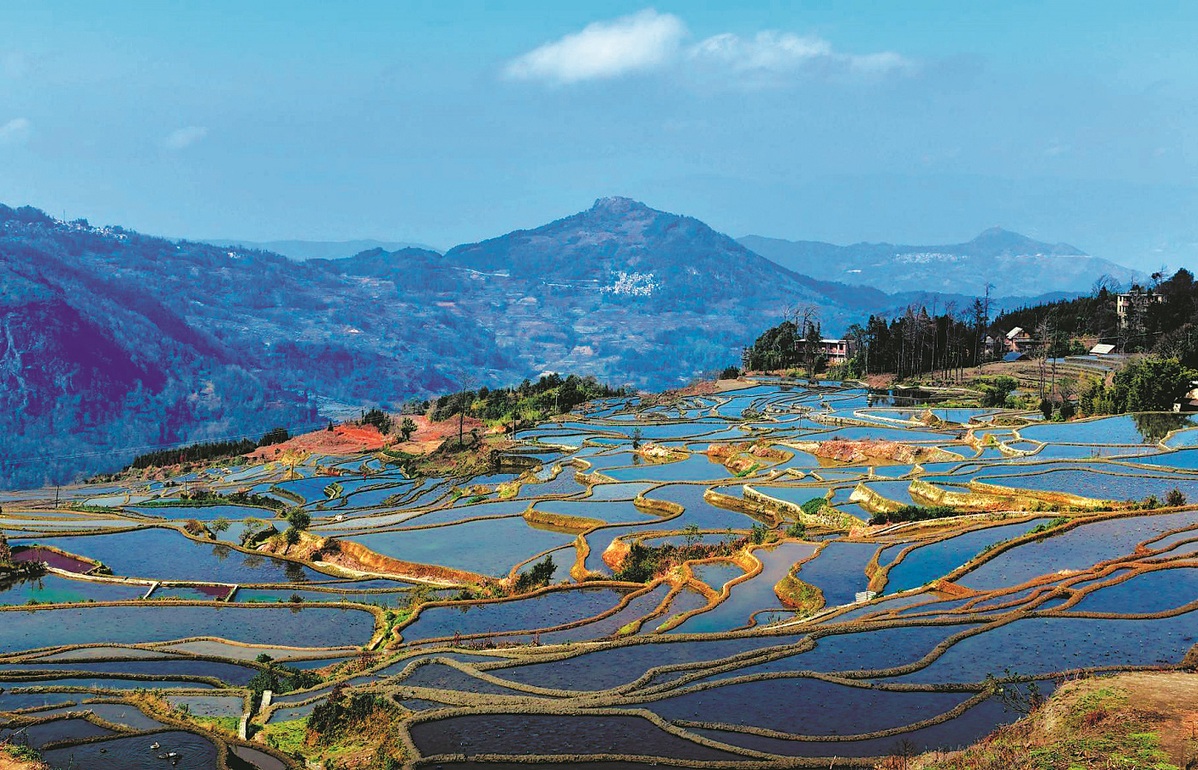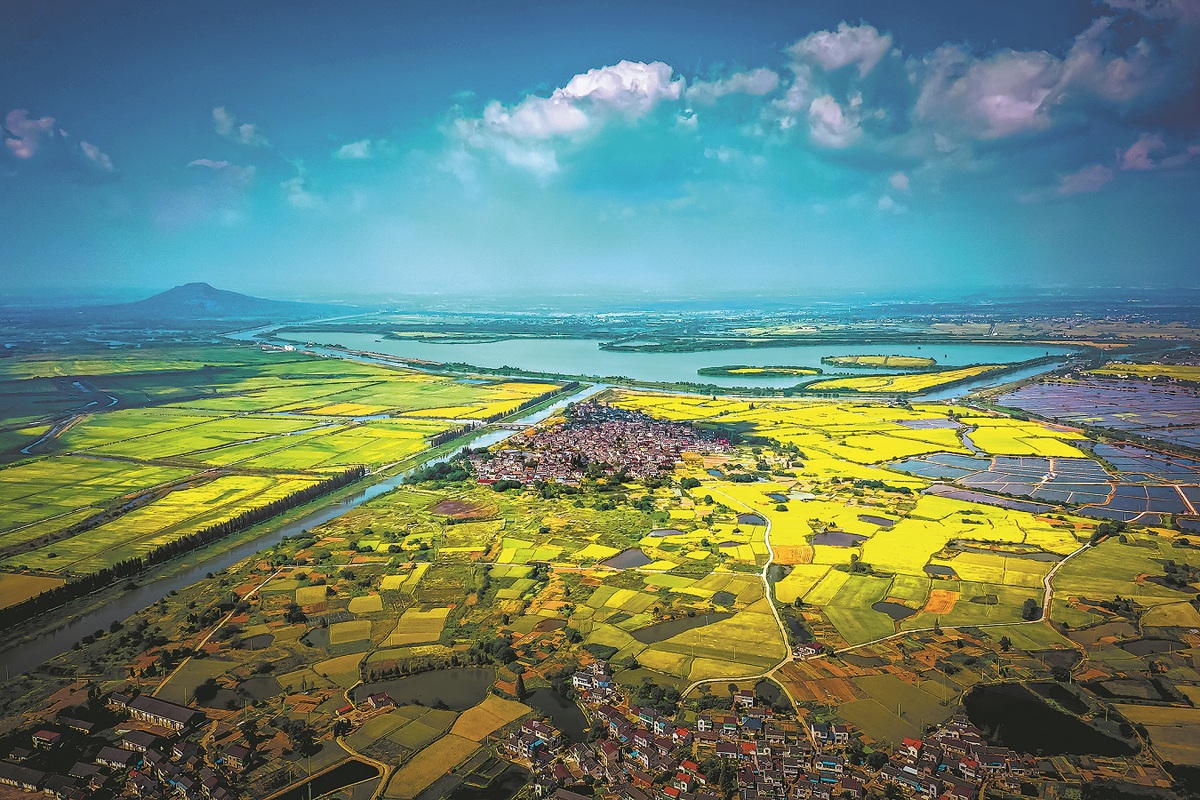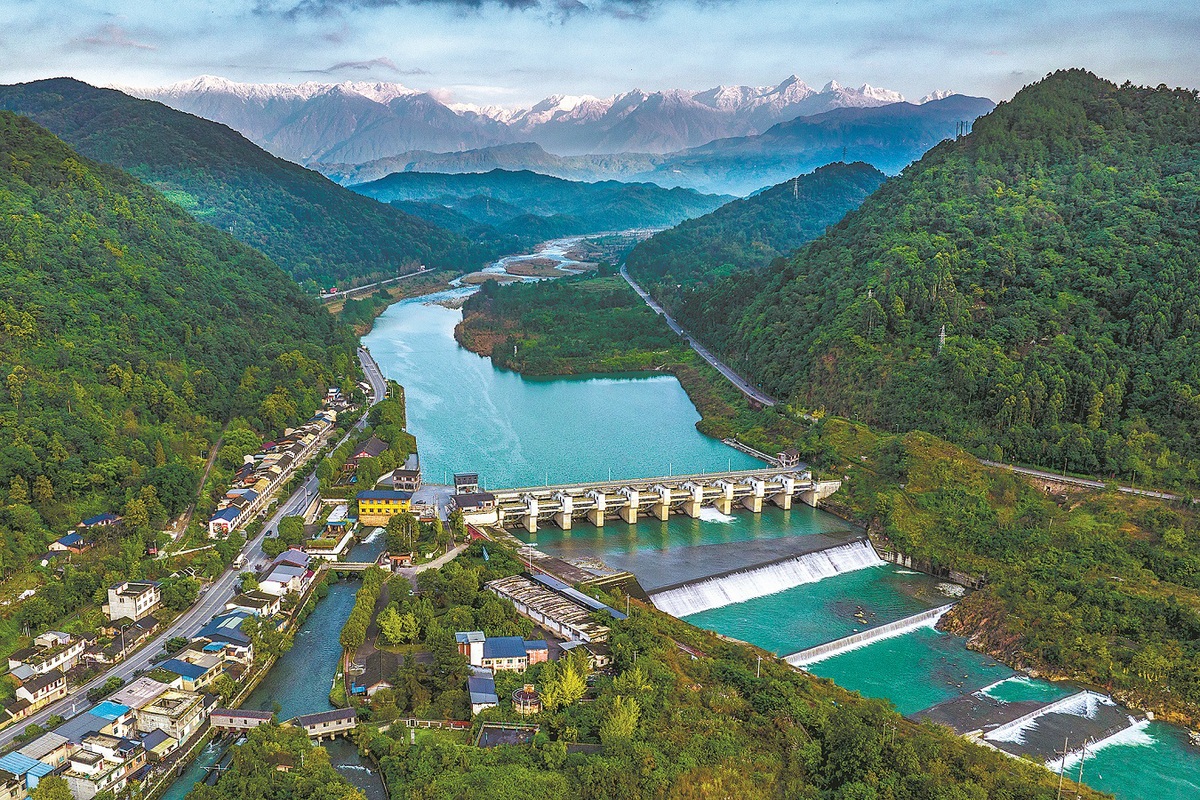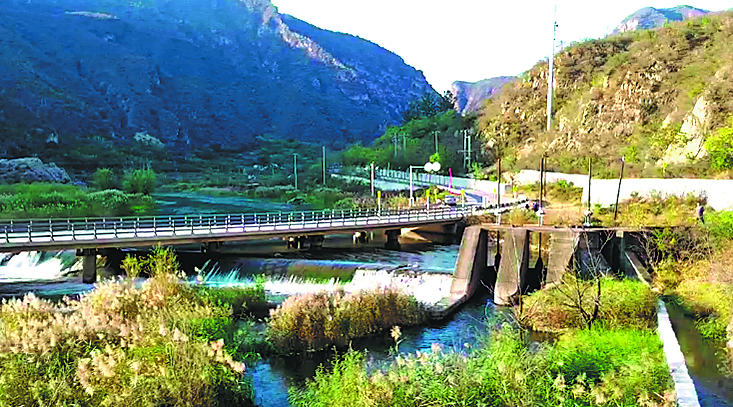


The Honghe Hani Rice Terraces in Honghe Hani and Yi autonomous prefecture, Yunnan province, date back to the Tang Dynasty (618-907). [Photo provided to China Daily]
Four ancient Chinese irrigation projects have been designated World Heritage Irrigation Structures, raising the number of such Chinese facilities on the WHIS list to 42, the Ministry of Water Resources said.
The Honghe Hani Rice Terraces, the Chishan Lake irrigation project, the Jianjiangyan irrigation system and the Yongding River ancient canal irrigation project were included in the list on Saturday during the 76th International Executive Council Meeting of the International Commission on Irrigation and Drainage in Kuala Lumpur, Malaysia. The council is the commission's highest decision-making body.
Also a UNESCO World Heritage site, the Honghe Hani Rice Terraces in Honghe Hani and Yi autonomous prefecture, Yunnan province, date back more than 1,300 years to the Tang Dynasty (618-907). Spread over 3,740 hectares, the site features a complex ecosystem of forests, villages, terraces and waterways that is intricately intertwined with the daily lives of the people, the process of growing crops and the ecology.

The Chishan Lake irrigation project in Jurong, Jiangsu province, was built during the Three Kingdoms period (220-280). [Photo provided to China Daily]
For centuries, villagers have built channels to direct water from mountaintop forests, where it is conserved, to their fields. This water flows through the villages, eventually merging into rivers, where the water naturally evaporates and returns as rainfall, creating a sustainable and complete natural cycle.
The Chishan Lake irrigation project in Jurong, Jiangsu province, was built more than 1,700 years ago. It remains a crucial irrigation and flood-control project in the upper Qinhuai River, serving more than 5,130 hectares.
The project is known for harnessing the natural terrain to its advantage. In plain polder or low-lying areas, embankments have been built to create retention lakes. Equipped with bidirectional sluice gates, the lakes mitigate flooding and drought in the low-lying areas. In hilly areas, dams have created stepped canals for navigation while providing irrigation water.

The Yongding River ancient canal irrigation project in Mentougou district, Beijing, is believed to have been built in the Liao Dynasty (916-1125). [Photo provided to China Daily]
Construction of the Jianjiangyan irrigation system began around 141 BC in Pengzhou, Sichuan province. It continues to irrigate 10,800 hectares of farmland. Builders used bamboo cages filled with pebbles to create weirs that coordinated irrigation, floodwater discharge and sediment removal.
The system also features weirs that divert spring water from artesian wells, ensuring irrigation even during droughts when river water is scarce.
The Yongding River ancient canal irrigation project in Mentougou district, Beijing, is believed to have been built during the Liao Dynasty (916-1125). It still irrigates about 133 hectares and provides supplementary water for orchards and ecological areas.

The Jianjiangyan irrigation system in Pengzhou, Sichuan province, dates back to the Western Han Dynasty (206 BC-AD 24). [Photo provided to China Daily]
The canal uses a bend in the Yongding River to draw water. Its sloped design ensures natural sedimentation, turning silt-laden river water into clean irrigation water.
Nineteen other projects from eight countries were also added to the list, taking the total number of global heritage irrigation sites to 200.
The commission instituted the designation in 2014 to protect and promote irrigation works of historical significance and scientific value.
点击右上角![]() 微信好友
微信好友
 朋友圈
朋友圈

请使用浏览器分享功能进行分享
